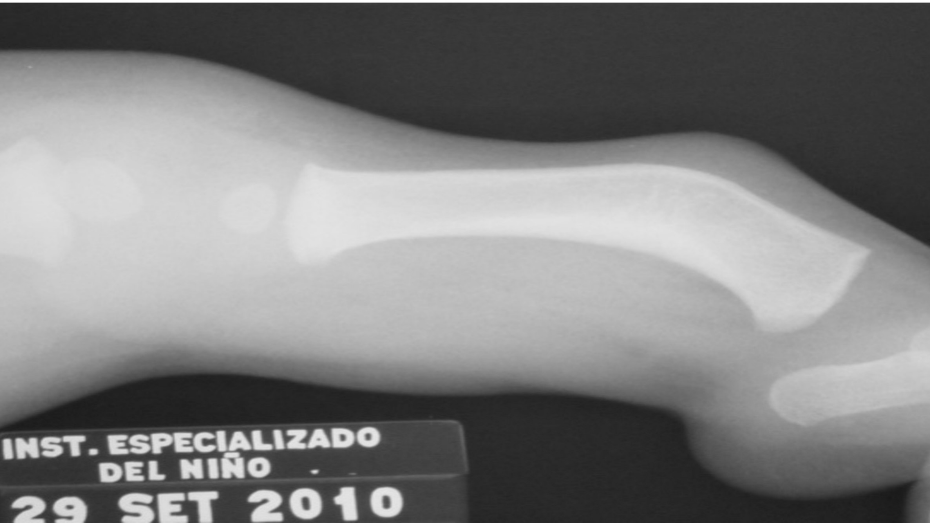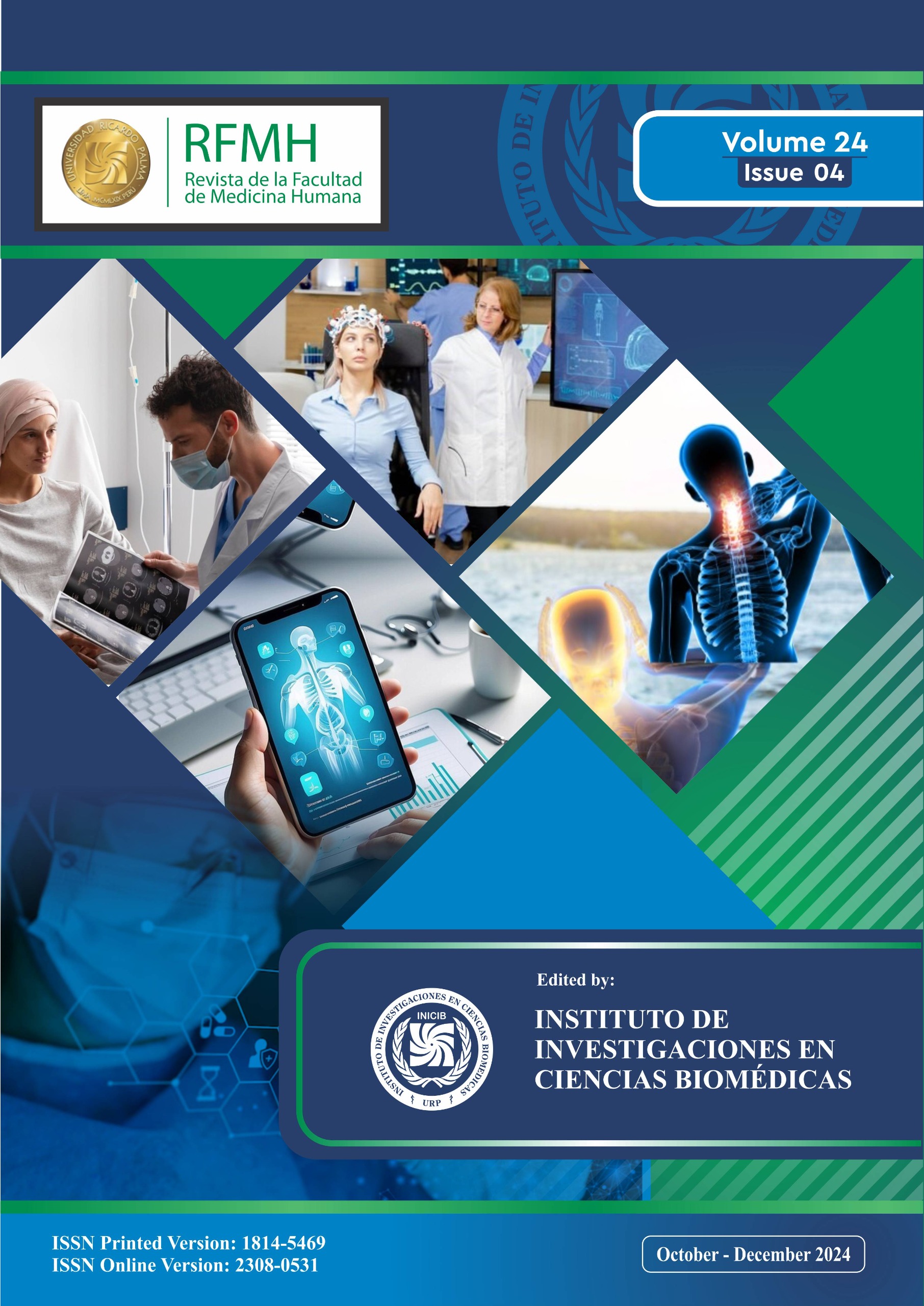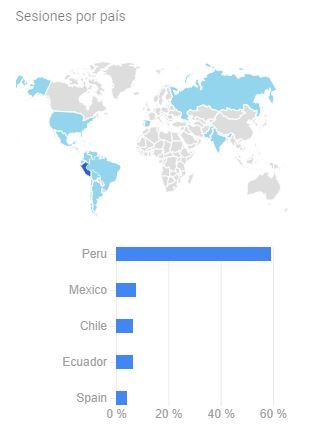Ultra-rare frequent disease in Peru: Fatco syndrome case report
Enfermedad ultra rara frecuente en Perú: Reporte de casos del síndrome fatco
Keywords:
Fibular aplasia, tibial campomelia, oligosyndactyly, FATCO syndromeAbstract
The fibular aplasia, tibial campomelia, oligosyndactyly (FATCO) syndrome is characterized by the variable leg anomalies. The genetic etiology of this disease has not been determined to date; however, it has been suggested that the genetic inheritance is autosomal dominant. The frequency of presentation globally is infrequent and this is the main reason for the low number of patient reports.
There’s a report of the unusually high presentation of 14 Peruvian patients diagnosed at a single center with the clinical features of FATCO syndrome over a 13-year period. We compare and discuss the clinical and radiological data of our patients with those of the 14 cases described worldwide. In addition, the demographic characteristics, family history, sex, age, and concomitant anomalies are analyzed.
Downloads
References
Courtens W, Jespers A, Harrewijn I, Puylaert D, Vanhoenacker F. Fibular aplasia, tibial campomelia, and oligosyndactyly in a male newborn infant: A case report and review of the literature [Internet]. Vol. 134 A, American Journal of Medical Genetics. Am J Med Genet A; 2005 [cited 2020 Oct 9]. p. 321–5. Disponible en: https://pubmed.ncbi.nlm.nih.gov/15754355/
Lewin SO, Opitz JM. Fibular a/hypoplasia: review and documentation of the fibular developmental field. [Internet]. Vol. 2, American journal of medical genetics. Supplement. Am J Med Genet Suppl; 1986 [cited 2020 Oct 9]. p. 215–38. Disponible en: https://pubmed.ncbi.nlm.nih.gov/3146293/
Fibular hemimelia: a new classification system - PubMed [Internet]. [cited 2020 Oct 9]. Disponible en: https://pubmed.ncbi.nlm.nih.gov/12499939/
Holder-Espinasse M, Devisme L, Thomas D, Boute O, Vaast P, Fron D, et al. Pre- and Postnatal Diagnosis of Limb Anomalies: A Series of 107 Cases [Internet]. Vol. 124 A, American Journal of Medical Genetics. Wiley-Liss Inc.; 2004 [cited 2020 Oct 9]. p. 417–22. Disponible en: https://pubmed.ncbi.nlm.nih.gov/14735595/
Lenz W, Zygulska M, Horst J. FFU complex: an analysis of 491 cases. Hum Genet [Internet]. 1993 May [cited 2020 Oct 9];91(4):347–56. Disponible en: https://pubmed.ncbi.nlm.nih.gov/8500790/
Bain AD, Barrett HS. Congenital bowing of the long bones: Report of a case. Arch Dis Child [Internet]. 1959 [cited 2020 Oct 9];34(178):516–24. Disponible en: https://www.ncbi.nlm.nih.gov/pmc/articles/PMC2012421/
Orphanet: Síndrome FATCO [Internet]. [cited 2021 May 26]. Disponible en: https://www.orpha.net/consor/cgi-bin/OC_Exp.php?lng=ES&Expert=2492
Ceausu I, Iliescu D, Poalelungi C, Posea C, Bacalbasa N, Dobritoiu D, et al. The Antenatal Detection of Fetal Limb Anomalies. In: Congenital Anomalies - From the Embryo to the Neonate [Internet]. InTech; 2018 [cited 2020 Oct 9]. doi: https://doi.org/10.5772/intechopen.76108
Hecht JT, Scott CI. Limb deficiency syndrome in half-sibs. Clin Genet [Internet]. 1981 [cited 2021 May 28];20(6):432–7. Disponible en: https://pubmed.ncbi.nlm.nih.gov/7337959/
Guio H, Poterico JA, Levano KS, Cornejo-Olivas M, Mazzetti P, Manassero-Morales G, et al. Genetics and genomics in Peru: Clinical and research perspective. Mol Genet Genomic Med [Internet]. 2018 Nov 1 [cited 2020 Oct 9];6(6):873–86. doi: https://doi.org/10.1002/mgg3.533
D’Amato Gutiérrez M, Palacio Díaz FA. Reporte de caso de síndrome FATCO: aplasia fibular, campomelia de tibia y oligosindactilia. Arch argent pediatr [Internet]. 2016 [cited 2020 Oct 16];e167–70. Disponible en: https://www.sap.org.ar/docs/publicaciones/archivosarg/2016/v114n3a19.pdf
Sezer O, Gebesoglu I, Yuan B, Karaca E, Gokce E, Gunes S. Fibular aplasia, tibial campomelia, and oligosyndactyly: A further patient with a 2-year follow-up. Clin Dysmorphol [Internet]. 2014 [cited 2020 Oct 9];23(4):121–6. Disponible en: https://pubmed.ncbi.nlm.nih.gov/25144151/
Vyskocil V, Dortova E, Dort J, Chudacek Z. FATCO syndrome - fibular aplasia, tibial campomelia and oligosyndactyly [Internet]. Vol. 78, Joint Bone Spine. Joint Bone Spine; 2011 [cited 2020 Oct 9]. p. 217–8. Disponible en: https://pubmed.ncbi.nlm.nih.gov/20947407/
Isik E, Atik T, Ozkinay F. The first report of fibular agenesis, tibial campomelia, and oligosyndactyly syndrome with hydrocephaly. Clin Dysmorphol [Internet]. 2019 [cited 2020 Oct 9];28(1):38–40. Disponible en: https://pubmed.ncbi.nlm.nih.gov/30260844/
Ekbote A V., Danda S. A case report of fibular aplasia, tibial campomelia, and oligosyndactyly (FATCO) syndrome associated with klinefelter syndrome and review of the literature. Foot Ankle Spec [Internet]. 2012 Feb [cited 2020 Oct 9];5(1):37–40. Disponible en: https://pubmed.ncbi.nlm.nih.gov/21965580/
Bieganski T, Jamsheer A, Sowinska A, Baranska D, Niedzielski K, Kozlowski K, et al. Three new patients with FATCO: Fibular agenesis with ectrodactyly. Am J Med Genet Part A [Internet]. 2012 Jul [cited 2021 Feb 17];158 A(7):1542–50. Disponible en: https://pubmed.ncbi.nlm.nih.gov/22628253/
Girisha KM, Vasudevan TG, Saadi AV, Shah H, Gopinath PM, Satyamoorthy K. Hypoplasia/aplasia of pelvis, femora, fibulae, ulna, digits and nails: Fuhrmann syndrome without WNT7A mutations. Clin Dysmorphol [Internet]. 2011 Oct [cited 2020 Dec 11];20(4):205–9. Disponible en: https://pubmed.ncbi.nlm.nih.gov/21716096/
Shah K, Shah H. Tibial hypoplasia with a bifid tibia: an unclassified tibial hemimelia. BMJ Case Rep [Internet]. 2016 Aug 16 [cited 2020 Dec 11];2016. Disponible en: https://pubmed.ncbi.nlm.nih.gov/27530878/
Ahmad M, Abbas H, Wahab A, Haque S. Fibular hypoplasia and complex brachydactyly (Du Pan syndrome) in an inbred Pakistani kindred. Am J Med Genet [Internet]. 1990 [cited 2021 Feb 17];36(3):292–6. Disponible en: https://pubmed.ncbi.nlm.nih.gov/2363425/
Önder Yılmaz H, Topak D, Yılmaz O, Çakmaklı S. A Turkish Female Twin Sister Patient with Fibular Aplasia, Congenital Tibia Pseudoarthrosis, Oligosyndactyly, and Negative WNT7A Gene Mutation. J Pediatr Genet [Internet]. 2019 Jun [cited 2020 Oct 9];08(02):095–9. Disponible en: https://pubmed.ncbi.nlm.nih.gov/31061754/
Kitaoka T, Namba N, Ji YK, Kubota T, Miura K, Miyoshi Y, et al. A Japanese male patient with “fibular aplasia, tibial campomelia and oligodactyly”: An additional case report. Clin Pediatr Endocrinol [Internet]. 2009 Jul [cited 2020 Oct 9];18(3):81–6. Disponible en: https://pubmed.ncbi.nlm.nih.gov/23926365/
Abdalla E, El-Beheiry A. Overlap between Fibular Aplasia, Tibial Campomelia, and Oligosyndactyly and Fuhrmann’s Syndromes in an Egyptian Female Infant. J Pediatr Genet [Internet]. 2017 Jan 2 [cited 2020 Oct 16];06(02):118–21. doi: https://doi.org/10.1055/s-0036-1597931
Izadi M, Salehnia N. Prenatal diagnosis of FATCO syndrome (Fibular aplasia, tibial campomelia, and oligosyndactyly) with 2D/3D ultrasonography. Ultrasound Int Open [Internet]. 2020 Sep 1 [cited 2021 Feb 17];6(2):E44–7. doi: https://doi.org/10.1055/a-1225-4388
FATCO Syndrome Variant - Fibular Hypoplasia, Tibial Campomelia and Oligosyndactyly -- A Case Report - PubMed [Internet]. [cited 2020 Oct 9]. Disponible en: https://pubmed.ncbi.nlm.nih.gov/25386471/
Goyal N, Kaur R, Gupta M, Bhatty S, Paul R. FATCO syndrome variant - Fibular hypoplasia, Tibial campomelia and oligosyndactyly –– A case report. J Clin Diagnostic Res [Internet]. 2014 [cited 2020 Oct 9];8(9):LD01–2. Disponible en: https://pubmed.ncbi.nlm.nih.gov/25386471/
Shah, K., & Shah, H. (2016). Tibial hypoplasia with a bifid tibia: an unclassified tibial hemimelia. BMJ Case Reports, 2016. doi: https://doi.org/10.1136/bcr-2016-216622
Matalon, D. R., Bhoj, E. J., Li, D., McDougall, C., Schindewolf, E., Khalek, N., Wilkens, A., McManus, M., Deardorff, M. A., & Zackai, E. H. (2023). Genomic sequencing in a cohort of individuals with fibular aplasia, tibial campomelia, and oligosyndactyly (FATCO) syndrome. American Journal of Medical Genetics Part A. doi: https://doi.org/10.1002/AJMG.A.63105
A M-M, D C, M B, J M, C A, M B, et al. From gestalt to gene: early predictive dysmorphic features of PMM2-CDG. J Med Genet [Internet]. 2019 Apr 1 [cited 2021 Oct 10];56(4):236–45. Disponible en: https://pubmed.ncbi.nlm.nih.gov/30464053/
S K, NC Ø, OJ B, T G, JOB J, C M, et al. Encoding Clinical Data with the Human Phenotype Ontology for Computational Differential Diagnostics. Curr Protoc Hum Genet [Internet]. 2019 Sep 1 [cited 2021 Oct 10];103(1). Disponible en: https://pubmed.ncbi.nlm.nih.gov/31479590/
Levy SE, Myers RM. Advancements in Next-Generation Sequencing. Annu Rev Genomics Hum Genet. 31 de agosto de 2016;17(1):95-115. doi: https://doi.org/10.1146/annurev-genom-083115-022413
Warr A, Robert C, Hume D, Archibald A, Deeb N, Watson M. Exome Sequencing: Current and Future Perspectives. G3 Genes Genomes Genet. 1 de agosto de 2015;5(8):1543-50. doi: https://doi.org/10.1534/g3.115.018564
Mitos, leyendas y cuentos peruanos - José María Arguedas, Francisco Izquierdo Ríos - Google Libros [Internet]. [cited 2021 Dec 4]. Disponible en: https://books.google.com.pe/books?id=2YEs2nKgLbc

Downloads
Published
How to Cite
Issue
Section
License
Copyright (c) 2023 Revista de la Facultad de Medicina Humana

This work is licensed under a Creative Commons Attribution 4.0 International License.





























